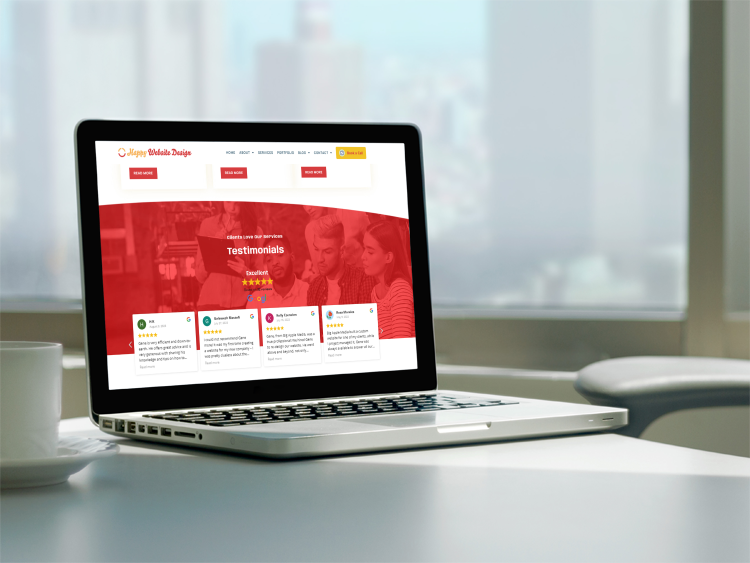Produce a Balanced Online Experience With Holistic Web Style
In today's electronic landscape, developing a well balanced online experience through all natural web layout is essential for fulfilling the varied demands of individuals. By prioritizing access and lining up content technique with customer choices, organizations can significantly enhance involvement.
Recognizing All Natural Website Design
This approach considers not just visual aspects yet also functionality, functionality, and the psychological impact of the web site on its users. By checking out a web site as an interconnected ecosystem, designers can guarantee that every element-- visual style, material, navigating, and interactivity-- works sympathetically to accomplish individual requirements.

Integrating an all natural viewpoint involves understanding the target market and their details requirements, choices, and actions. It requires an analysis of just how customers interact with different elements of the site and exactly how these interactions influence their overall experience. This approach likewise thinks about the more comprehensive context in which the site operates, consisting of brand identity, marketing approaches, and competitive landscape.
Inevitably, an all natural technique to web style results in a more engaging and efficient online visibility. By prioritizing the user trip and cultivating a seamless experience throughout all touchpoints, developers can produce websites that not only capture attention however also urge continual communication and contentment. This extensive strategy advertises lasting success and fosters brand name commitment.
Key Principles of Individual Experience

One crucial principle is use, which stresses the importance of uncomplicated navigating and clear functionality. Internet sites should be very easy to browse, allowing users to find info swiftly. This is closely connected to consistency, where design aspects, such as buttons and menus, need to stay consistent throughout the website to enhance knowledge and ease of usage.
Another substantial principle is responses, guaranteeing that customers are educated concerning their interactions. Whether through aesthetic cues or notices, responses enhances a sense of control and complete satisfaction. Furthermore, the concept of power structure determines that details ought to be organized realistically, assisting individuals with material efficiently.
Last but not least, emotional style plays a crucial duty in UX. By evoking favorable feelings with looks and interactions, designers can produce unforgettable experiences that foster individual commitment - website development consulting. By sticking to these concepts, web designers can create alternative experiences that reverberate with users and fulfill their goals
Relevance of Accessibility
Accessibility is a critical element of internet style that makes certain all users, regardless of their capabilities or specials needs, can interact with digital content properly. By prioritizing availability, internet developers produce inclusive settings that deal with diverse user requirements, boosting overall individual experience.
An obtainable web site abides by established standards, such as the Web Content Accessibility Standards (WCAG), which suggest techniques like providing text choices for non-text web content, making certain enough color contrast, and allowing key-board navigation. These methods not just serve individuals with specials needs, such as visual or acoustic disabilities, however also benefit other user teams, including those with situational limitations or older grownups.
Additionally, the significance of ease of access expands past honest factors to consider; it also influences company end results. An inclusive web site can reach a wider audience, eventually bring about boosted engagement and conversions. Furthermore, accessibility conformity lowers the danger of legal effects associated with discrimination.

Incorporating Material Strategy
Producing a comprehensive electronic environment naturally causes the requirement of a durable material technique that lines up with customer needs. An efficient web content strategy works as the backbone of all natural website design, making sure that information is not just accessible yet additionally interesting and appropriate. It requires a deep understanding of the target market, including their preferences, actions, and prospective barriers to accessibility.
To integrate a material technique properly, organizations have to focus on user-centric web content development. This can be achieved via extensive target market study, which notifies the types of material that will certainly reverberate with individuals. Additionally, content ought to be structured realistically, utilizing clear headings, bullet points, and concise language to boost readability.
Cooperation throughout teams-- design, growth, and content-- is necessary to make certain that the material method is cohesively implemented. Normal audits of content performance will certainly help in refining approaches, guaranteeing the web content remains fresh and straightened with individual assumptions. Integrating multimedia components can enhance user interaction, providing to diverse learning designs while promoting inclusivity. By prioritizing a cohesive material method, companies can create a balanced online experience that cultivates engagement and ease of access for all individuals.
Gauging Success and Engagement
While a well-executed material strategy develops the foundation of alternative website design, determining success and involvement is essential for examining its effectiveness and assisting future renovations. Trick performance signs (KPIs) such as page views, holistic web design bounce rates, and typical session duration supply measurable understandings right into customer habits. These metrics highlight which material resonates most with individuals and where possible friction factors might exist.
Moreover, qualitative actions, such as individual responses and surveys, can offer much deeper insights into user complete satisfaction and engagement degrees. Tracking social networks interactions and conversion prices likewise helps gauge the efficiency of content in driving desired actions, whether that be acquisitions, sign-ups, or info requests.
Using tools like Google Analytics, heatmaps, and A/B testing can improve understanding of customer interaction patterns and choices. This data makes it possible for internet developers and material strategists to iterate on their styles, making sure that the on the internet experience stays user-centered and lined up with service objectives.
Verdict
By focusing on customer demands and access, designers can create interconnected ecosystems that improve engagement and contentment. A well-aligned content method further adds to a natural user experience, while consistent feedback systems are necessary for promoting commitment.